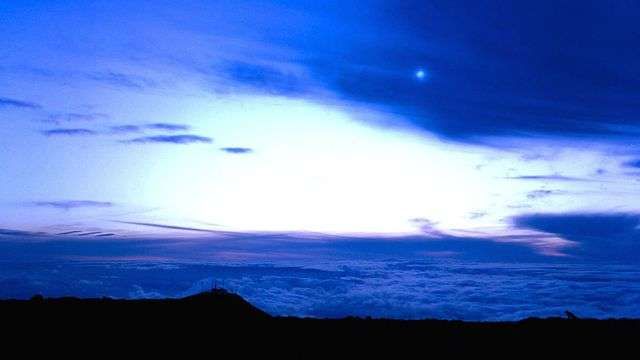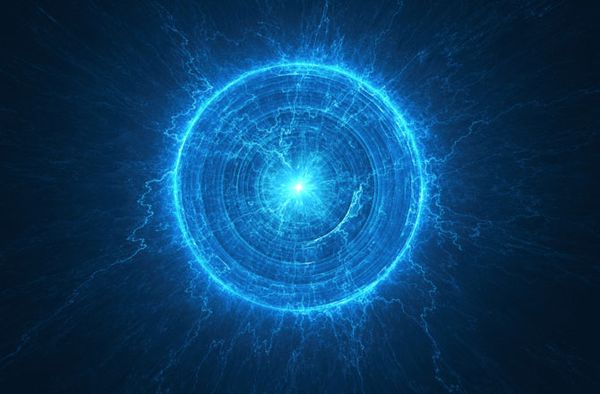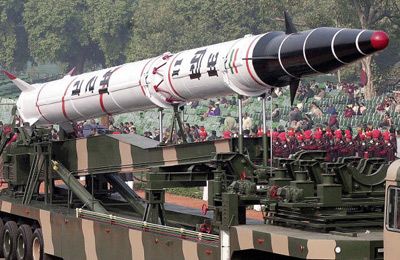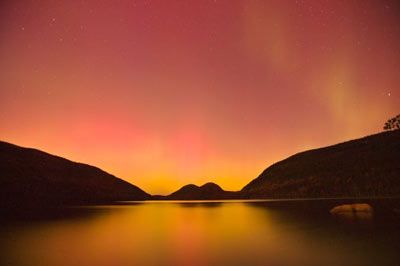
"It was pitch black at night, couldn't see a hand in front of your face," said Cecil Cole, "and at that instant, the whole Pacific lit up like a flash bulb, just like an electronic flash, bright — bright as daylight. If you could imagine night turning into mid-day for just a split second. And then the sky turned green for about a second. Wasn't expecting that, either."
As Cole continued to watch, the silent light show flashed from green to glowing red and then slowly faded away. "It was a breathtaking scene," said Cole during an interview with NPR.
Advertisement
But it wasn't New Year's Eve, and it wasn't the Fourth of July. It was the summer of 1962 during the tense years of the Cold War, when the U.S. military exploded a 1.4 megaton hydrogen bomb 250 miles (402.3 kilometers) over the Pacific Ocean and created the largest human-driven light show in history.
For nearly an hour, witnesses from locations as far-ranging as New Zealand and Hawaii saw the night sky morph from color to color — and sometimes display rainbow stripes — as the after-effects of a thermonuclear warhead 100 times more powerful than the one dropped on Hiroshima ripped through the atmosphere. The project, code-named Starfish Prime, aimed the bomb to detonate within the Van Allen radiation belts, magnetic zones circling the earth which had been discovered only a few years earlier. These "belts" are formed by strong magnetic fields that hold high-energy particles in place.
The radiation released by the hydrogen bomb's detonation created an extension of the Van Allen belts that resulted in colorful skies. The explosion released electrons that collided with particles in the Earth's atmosphere. As the electrons collided with nitrogen, for instance, the impact created blue and purple. Collisions with oxygen made yellow and green.

The July 9, 1962, blast wasn't the first time a hydrogen or atomic bomb had been detonated in the Earth's atmosphere to study the effects.
The U.S. and Russian militaries had been exploding bombs of various capabilities in the world's skies since 1958, and the news that another would explode over the Pacific Ocean on July 9, 1962, launched responses that ranged from protests to viewing parties. Hotels in Hawaii planned rooftop "rainbow watch parties" to view the blast, while citizens in Great Britain chanted "No more tests!" outside the U.S. embassy.
When the July blast occurred, its radiation snuffed out about seven satellites in Earth's orbit. The detonation also created an electromagnetic pulse that disrupted electricity and telephone service in Hawaii, which was nearly 1,000 miles (1,609.3 kilometers) away from blast central.
The 1962 discharge also left a lasting impact on Cecil Cole, a research scientist working for the U. S. government who viewed the impact from his post on a remote Pacific Island.
"I realized when I saw that thing go off that there really wasn't a safe place on Earth to test those things," he said in the 2010 NPR interview, "and I really didn't want to participate in that anymore."
Not long after the explosion, Cole resigned his position to become a university professor. By mid-November 1962, both the U.S. and Soviet governments had ceased high-altitude nuclear testing, and people in the '60s had to create their own psychedelic light shows.
Advertisement


